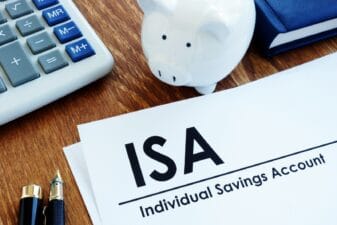 When we look at the share-price performance of the London-listed supermarkets it’s tempting to start thinking about recovery potential, which could mean some decent capital-growth for contrarian-minded investors willing to take the risk with Britain’s food purveyors.
When we look at the share-price performance of the London-listed supermarkets it’s tempting to start thinking about recovery potential, which could mean some decent capital-growth for contrarian-minded investors willing to take the risk with Britain’s food purveyors.
After all, over the last year, Tesco is down about 32%, Wm. Morrison Supermarkets is down around 44% and J Sainsbury (LSE: SBRY) is down 21%, but which is the best to back for recovery potential?
My money would go with Sainsbury’s, and the reason for that is the company was the strongest player of the three leading up to the current period of market weakness.
Falling earnings
Sainsbury’s posted an earnings’ advance for the year ending March 2014, which topped a growth record stretching back many years, and which it only forecasts to break during the current year with a 7% earnings’ decline.
That contrasts with Tesco’s two years of earnings’ deterioration that it will continue in the current year with a further 21% lurch down, and with Morrison’s earnings’ slip last year which it predicts it will follow with a 52% earnings collapse in the current year.
So what is Sainsbury’s doing so right that sees it entering the current difficult market conditions in better shape than its peers? We can find some clues in the trading statement the firm released on 11 June.
Getting it right
To meet the threat of discounting competition swooping into the middle supermarket space to snatch up cash-strapped consumers, Sainsbury’s Chief Executive said that, in the first quarter of the current trading year, the firm continued to reduce prices and improve quality to increase the value on offer to shoppers. He reckons that lower food and fuel prices will be a welcome respite to customers’ finances but they continue to spend cautiously, which means that Sainsbury’s is seeing the lowest quarterly industry growth in a decade.
However, the firm has a few effective weapons in its arsenal to fight the current supermarket skirmish. One key point of difference is Sainsbury’s own-brand offering reckons the CEO. The Taste the Difference range saw sales up nearly 10 per cent in the quarter, and at Easter, the firm launched its first by Sainsbury’s Easter eggs, more than doubling own-brand market share to 40 per cent. Another initiative led to a trial of what the firm calls an in-store scratch bakery in a convenience store, where employees bake products from scratch every day.
Sainsbury’s boss says service levels in Sainsbury’s stores are industry leading. He thinks strong availability throughout the day, combined with high in-store standards and customer engagement, help to differentiate Sainsbury’s from its peers.
Growth lines
Sainsbury’s strength in alternative business lines will help get it through the current crisis in mid-market grocery, I reckon. After all, the likes of Aldi, Lidl and other discounters don’t compete with Sainsbury’s outside the traditional supermarket route to market.
Sainsbury’s general merchandise and clothing businesses grew strongly in the first quarter with clothing delivering double-digit like-for-like sales growth. Complementary channels and services are big growth areas. Sales from convenience and online almost doubled over the last five years to 15% of total sales. Convenience sales grew by over 18% year-on-year and, during the first quarter, the firm opened its 200th convenience store, in London. Groceries online grew by over 10% year-on-year, and Sainsbury’s opened its 1,500th ATM and launched two new credit cards.
If Sainsbury’s can limit the decline in earnings from its traditional supermarket business and keep its foot on the gas with alternative growth-business areas, investors might see the hoped for share-price recovery going forward.
What now?
At a share price of 308p, Sainsbury’s forward P/E rating is running at about 10.5 for year to March 2016. The forward dividend yield comes in at 5.3% and earnings will cover that payout around 1.78 times if city analysts’ forecasts are correct.
The valuation looks attractive and there’s a solid-looking dividend payout to keep us company as we wait for the capital-growth that might arrive with business recovery and advancement.







